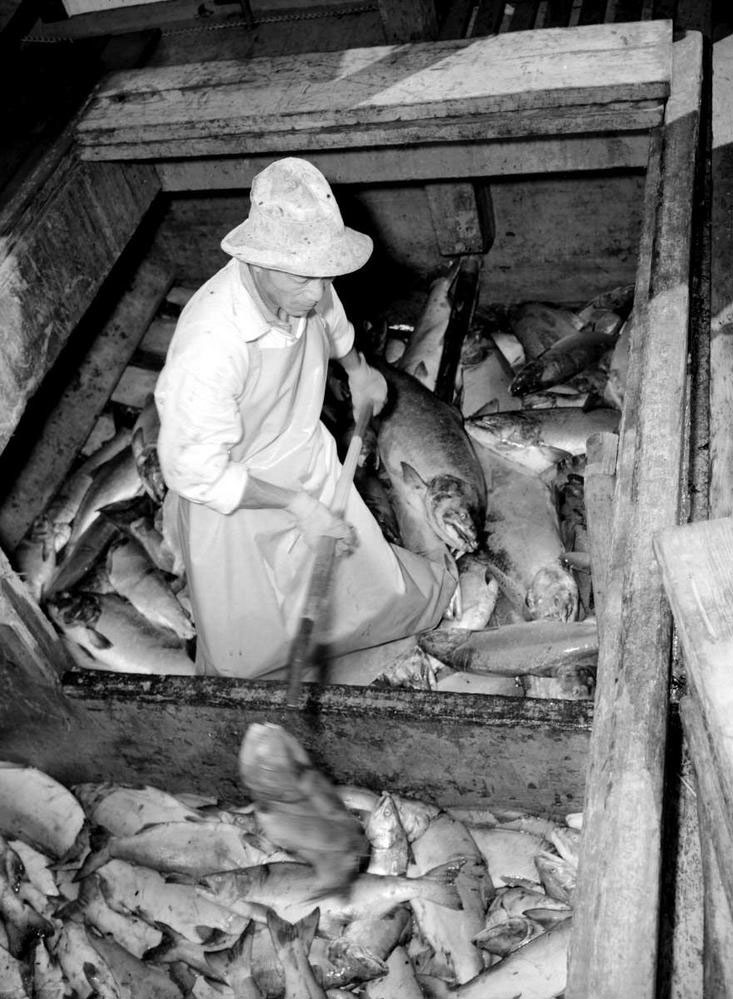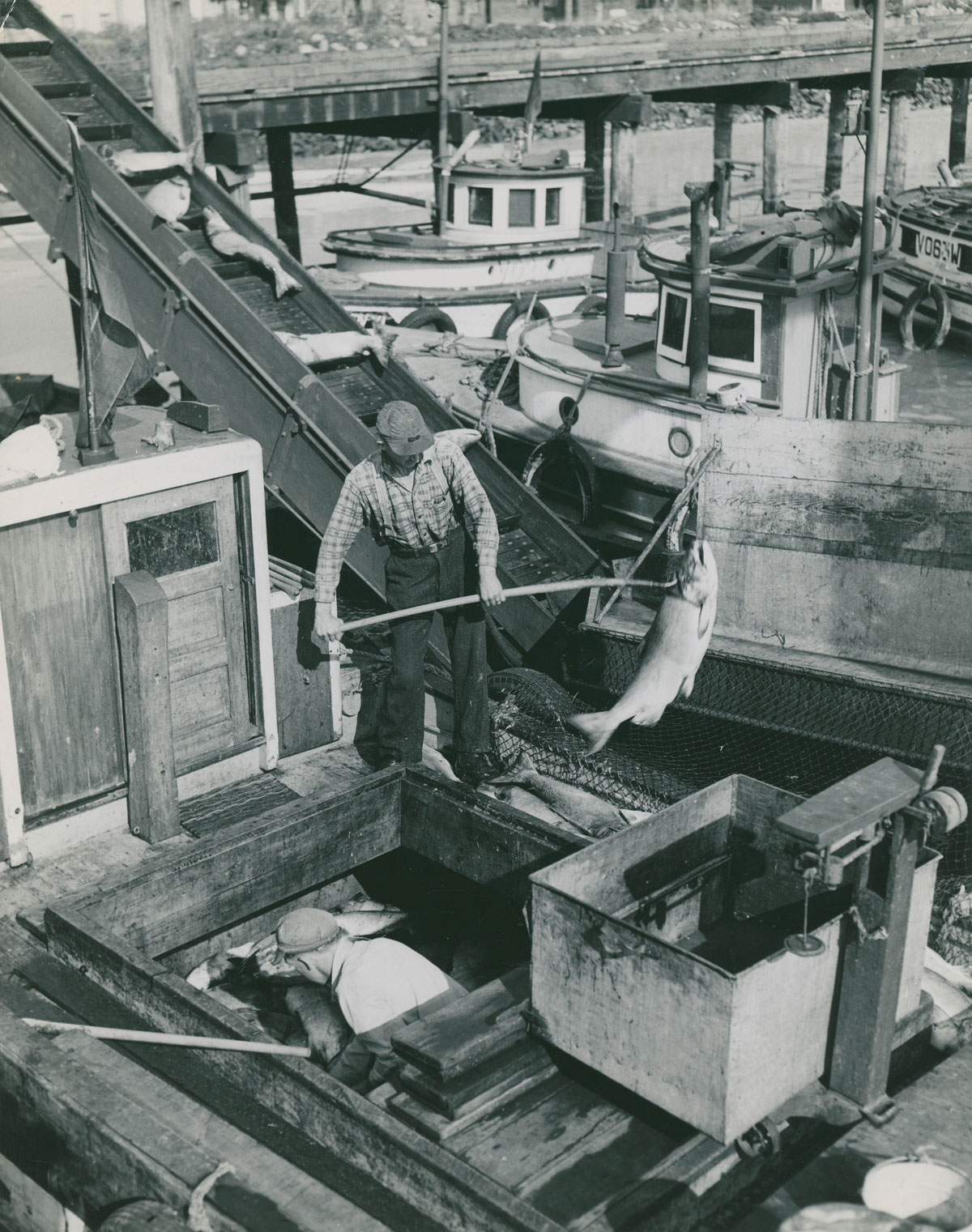The canning process began at the unloading dock.
In the early years a crew of men called pitchers stood knee-deep in salmon and unloaded the fish from the boats or a fish scow onto the open docks. Fish were moved one at a time with a long handled, one-tined fork called a peugh or pike.
The unloading process was mechanized in the 1930s with the introduction of the fish elevator which cut labour costs and preserved quality.
Now hydraulic suction pumps are used to move salmon directly from a ship’s hold into a cannery or fish processing plant, eliminating the need for any handling.

Standing knee-deep in fish, this worker uses a peugh to unload salmon from the hold of the fishing boat. c. 1952. Image I-28100 courtesy of the Royal BC Museum and Archives.

Two workers pitching salmon up onto a fish elevator that leads up to the cannery. Gulf of Georgia Cannery Society Archives courtesy of the Canadian Fishing Company CFC 3-5-3

